Hashtags, a viral song and memes empower Iran's protesters
- Published
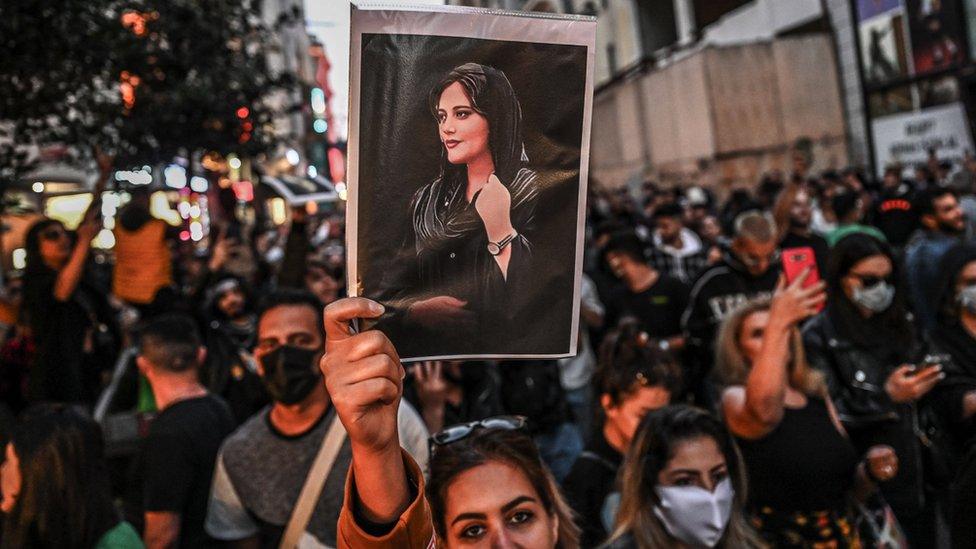
A protester holds a portrait of Mahsa Amini during a demonstration in Istanbul, Turkey
Anti-government protests have swept across Iran over the past six weeks, with women and schoolgirls at the forefront - burning their headscarves or swinging them in the air while shouting "Woman, Life, Freedom".
The demonstrations were sparked by the death in custody of Mahsa Amini, a 22-year-old Kurdish woman who was detained by the morality police for allegedly wearing her hijab (headscarf) "inappropriately".
While thousands of people have been taking to the streets to show their anger at the clerical establishment, many more both inside and outside Iran have been amplifying their calls on social media and spreading awareness.
Challenging the narrative
Getting a hashtag to trend on Twitter has been one of the main ways for Iranians to get their voices heard around the world.
The hashtag #mahsaamini was tweeted and retweeted more than 250 million times in Persian and more than 50 million times in English in the first month after her death.
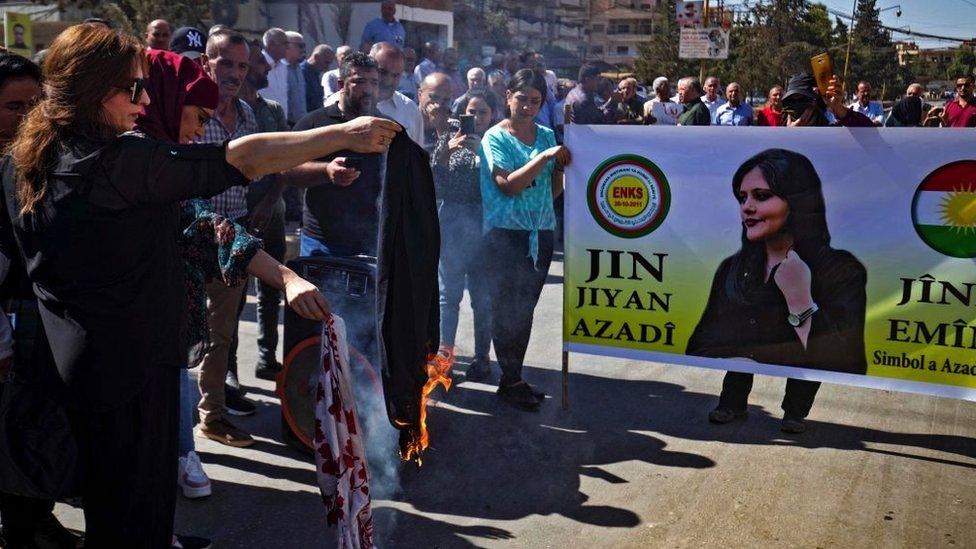
Social media has helped demonstrations to spread all around the world, such as here in north-eastern Syria
"People [in Iran] are constantly told that opposition to the system doesn't exist or if it does it is little and will be crushed," says Iranian women's rights activist Negin Shiraghaei.
"Hashtags play an important role for people to find each other and recognise their power."
In the age of leaderless movements, Ms Shiraghaei says, hashtags could play the role of leaders.
"What do people want from hashtags? Hope, guidance and information," she explains. "That is what the hashtag has done for protesters so far."
But hashtags and Twitter storms are just some of the ways Iranians hear from each other and make the world take notice.
Lifting spirits
The reaction of Iranian authorities towards the protests has often been violent.
Norway-based Iran Human Rights has reported that at least 253 protesters have been killed by security forces, 34 of them children.
But even in dark times like this Iranians have tried to use humour to keep their spirits up.
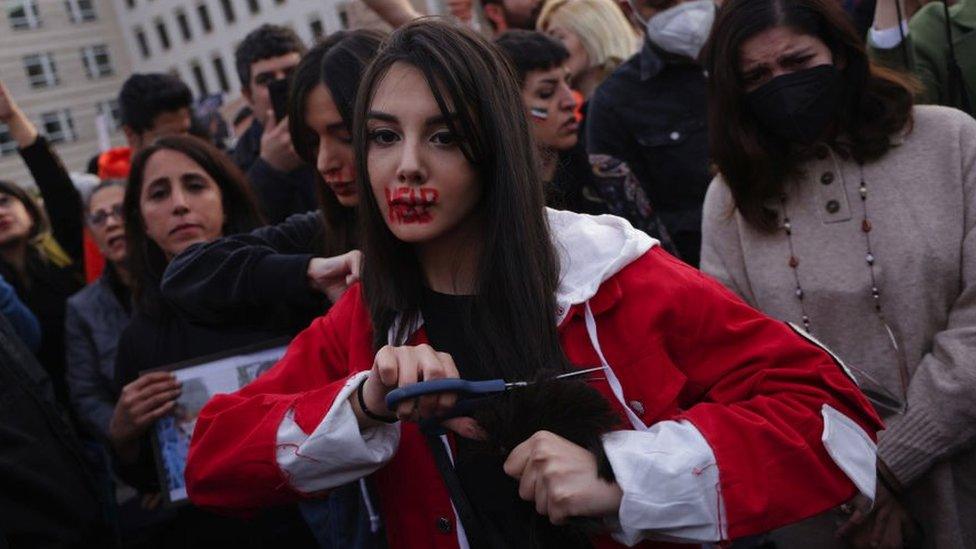
Women have been cutting their hair in solidarity with the protesters in Iran
After an evening news bulletin on state run TV was hacked by protesters and replaced with an image of the Supreme Leader Ayatollah Ali Khamenei in flames, people made memes of the TV presenter's stone-faced reaction.
They also poked fun at the presenter by inserting his face into a viral clip of Snoop Dog and Kevin Hart laughing on their talk show, external.
'For the sake of'
The mandatory hijab laws and what the protesters see as the constant meddling of Islamic laws in their everyday lives have been the targets of much of the criticism on social media.
At the start of the unrest, many Iranians expressed their reasons for protesting in posts on Twitter and Instagram that started with the Persian phrase "Baraye...", or "For the sake of...".
"For the sake of all the times we had to lower the volume of our music in the car when you guys [morality police] passed by, for all the cassettes we had to hide," tweeted Usaneh_dahr.
Western pop music and Iranian pop music produced outside the country are banned in Iran, and for decades authorities would stop and search cars - and even raid homes - in search of what they called "indecent music".
"For the sake of all the girls who have to bury the dream of ever going to a professional dance school, for myself," tweeted Ferferity.
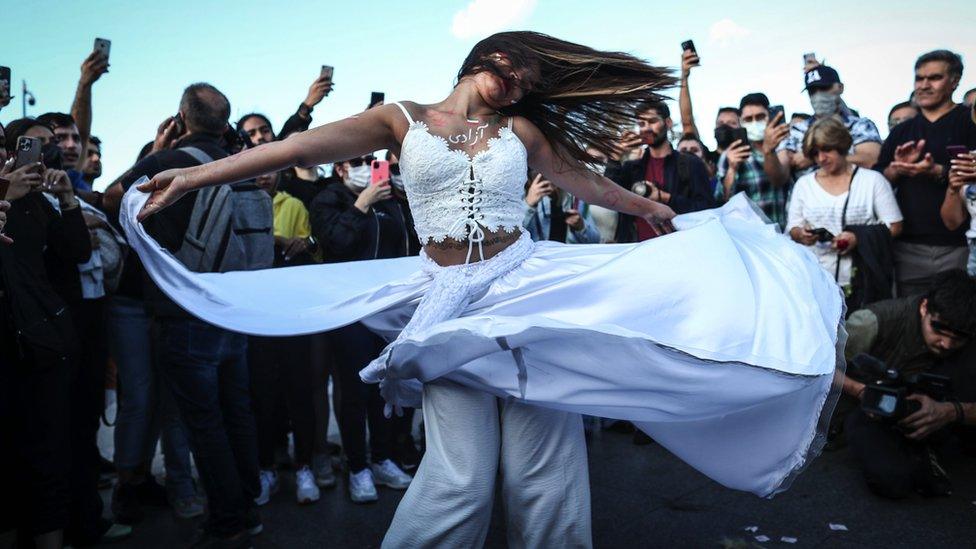
An Iranian woman dances at a protest in Turkey - there is a ban on public dancing in Iran
Dancing in public in Iran is banned, with the exception of some traditional dances performed by men. Women do not have the right to dance or sing in public under any circumstances, although underground women-only dance classes do exist.
In 2017, the government even banned Zumba exercise classes in gender-segregated gyms, calling them "un-Islamic".
"For my mother tongue," said another tweet by RMshii94.
That was a reference to the 43-year-old ban on ethnic minorities teaching their own languages in schools in Iran.
Those who defy the ban face imprisonment like Zara Mohammadi, a Kurdish language teacher currently serving a five-year sentence for teaching her mother tongue.
Protest anthem
An Iranian pop singer living in Iran, Shervin Hajipour, gathered a number of such tweets and wrote a song about them, entitled "Baraye..."
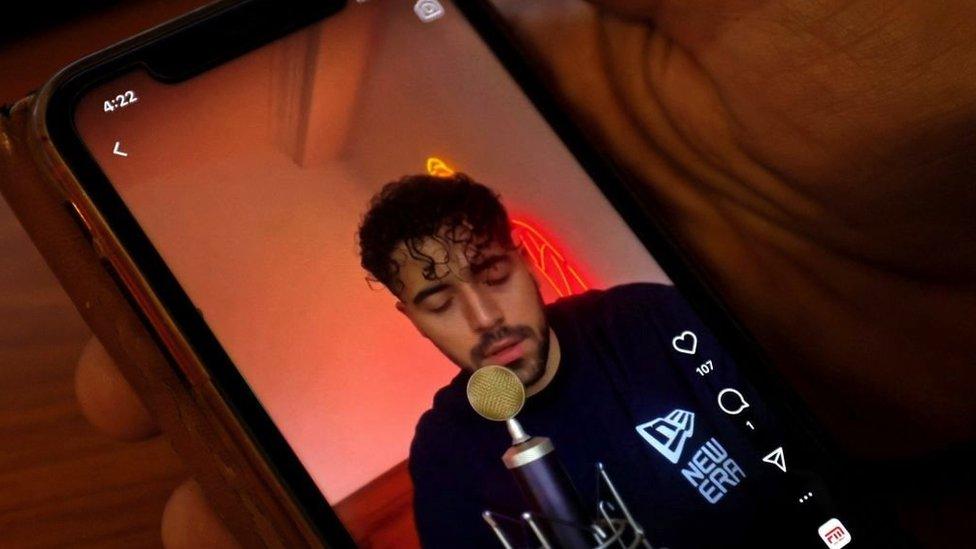
Shervin Hajipour posted a viral video of himself playing his song "Baraye..." on his Instagram page
The video he posted on his Instagram page was viewed 40m times in the first 48 hours it was online.
"Baraye…" has since become an anthem of the protests and has been played at solidarity rallies all over the world.
Hajipour was arrested on 29 September and released on bail on 4 October. After his release, Hajipour posted an Instagram story saying he regretted that his song was being used by political groups outside the country for "certain purposes".
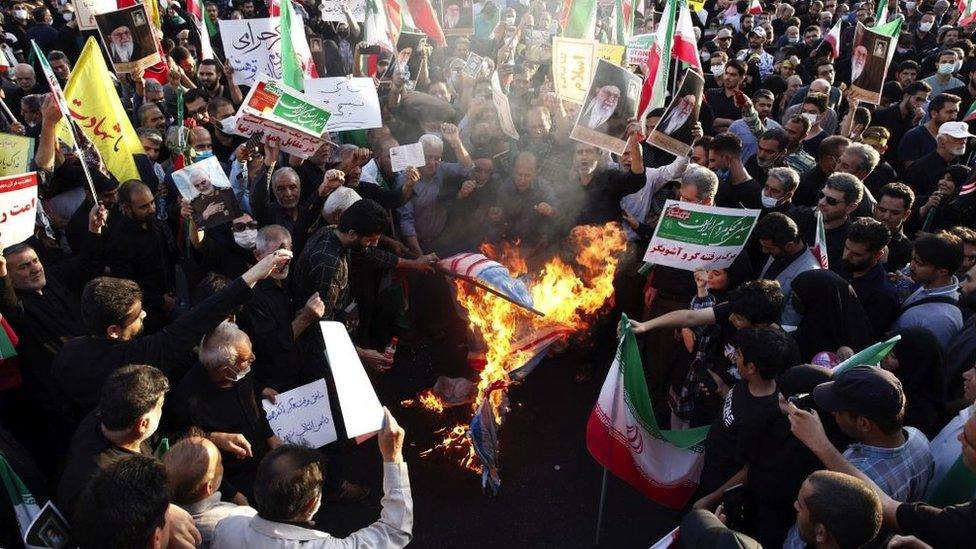
Pro-government counter-protests have been organised in Iran, but are less evident on social media
It is not clear whether he was still in detention when he made the statement and whether he was under duress.
Activists say Iranian state media routinely broadcast forced "confessions" as a means to suppress dissent.
Cutting hair
In the past four decades artists inside Iran have found clever ways to bypass the censorship of the ministry of culture and Islamic guidance.
Foroozan, a digital creator based in Los Angeles, has been posting art on her Instagram page, external to support the protests inside Iran.
One of her works shows the image of a young woman standing in front of the iconic Si-o-Se Pol, a 17th Century arched bridge in Isfahan, and cutting her ponytail.
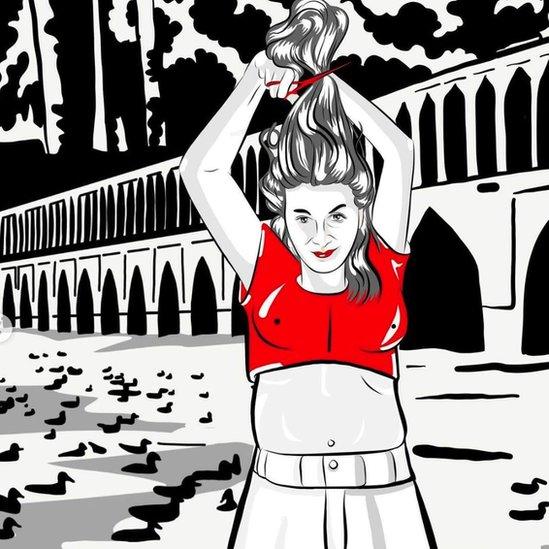
The latter is an act that has become one of the symbols of the protests in Iran, and women all over the world have been doing the same in solidarity with Iranian women.
An artist inside Iran called Benyamin created a short video, entitled Unity for Freedom, that has gone viral on social media.
It shows the gloved hand of a member of the security forces wielding a truncheon and beating the other hands around him. However, his hand is eventually overcome by the other hands. The video ends with his hand joining theirs in making a victory sign.
Such online material has meant that the protesters' voices have not been silenced, even as the clampdown continues on and off the streets in Iran
"In a country where the people have no media, social media has become the medium of the people," says Negin Shiraghaei. "It is a decentralised media that allows people to be heard and seen."